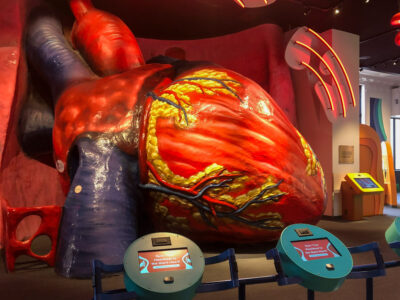A trio of recent Penn grads imagine a world where doctors can diagnose illnesses in less than a minute, with just one drop of blood from a patient. No more invasive blood draws, no more waiting several days to get test results, no more complicated handoffs between diagnostic labs and hospitals. Just results, then immediate treatment.
The team behind Drop Diagnostics says it’s possible with a biosensor that 22-year-old cofounder Peter Bacas developed during his senior year at Penn.
But it’s going to take three to four years and a lot of money before Drop’s first product hits the market. Getting approval from the Food and Drug Administration alone will cost in the millions of dollars, Bacas said.
Using carbon nanotubes, three Penn grads think they've built a better mousetrap.
The cofounders, all 22-year-olds who graduated from Penn with bioengineering degrees, say they’re in it for the long haul.
“If there was a company that was working on a similar technology that was further along, maybe I would have thought about working for them,” Bacas said. “But there wasn’t.”
It’s not something you see everyday: a team straight out of college jumping into cost- and time-intensive medical device world. Undergraduates aren’t encouraged to commercialize work they developed in a university science lab because it’s so expensive, said cofounder Nishant Neel.
That, and everyone else your age is building software, he added.
So what gives? The team says they’re just really excited about the technology and they believe in it.

(Photo courtesy of Drop Diagnostics)
Fresh off graduating from the DreamIt Health accelerator, what’s next for Drop Diagnostics?
The company is raising $500,000 to expand its team and finish building a prototype, which will likely be a standalone device rather than an iOS app. The company’s first product will focus on testing for the flu because rapid flu tests already exist. That means the team will likely benefit from a simpler (and cheaper) pathway for getting approved by the FDA. (The rapid flu tests that are already out are not always accurate, the team said.)
###
The technology behind the Drop Diagnostics biosensor centers around carbon nanotubes.
Their invention, not Penn's. Here's why.
Even though Bacas developed the sensor with three other Penn students as part of his senior project, Penn doesn’t own any part of it. That’s because the Penn Patent Policy states that if an undergraduate didn’t take any ideas from faculty, use university resources like grant funding or develop the technology while working for the school, the school can’t lay claim to the technology, said Laurie Actman, COO of the Penn Center for Innovation. Bacas had to get all his professors to sign off saying that he didn’t take any ideas from them and eventually got the proper clearance from Penn.
(On the other hand, if Bacas was a graduate student working for or doing research for Penn when he developed the technology, Penn would own the invention, as per the university’s patent policy, Actman said.)
The Drop Diagnostics team says they’re not sure where to headquarter their company. Philly is a possibility: cofounder Max Lamb said he’s been impressed with how the tech scene has grown in the four years he’s been at Penn and that it would make sense to stay, given the density of hospitals and that most of their network is here. They’ve also set up labs at South Philly-based makerspace NextFab.
Oh, and if Drop Diagnostics reminds you of fellow DreamIt Health smartphone diagnostics startup Biomeme, you’re on the right track. The main difference, as Bacas puts it, is that Biomeme looks at a full strand of DNA, whereas Drop Diagnostics would be looking at smaller fragments of DNA, RNA and other markers of disease — like antibodies, antigens and glucose.
Before you go...
Please consider supporting Technical.ly to keep our independent journalism strong. Unlike most business-focused media outlets, we don’t have a paywall. Instead, we count on your personal and organizational support.
Join our growing Slack community
Join 5,000 tech professionals and entrepreneurs in our community Slack today!

Look inside: Franklin Institute’s Giant Heart reopens with new immersive exhibits
How Berkadia's innovation conference demonstrates its commitment to people and technology

What actually is the 'creator economy'? Here's why we should care


